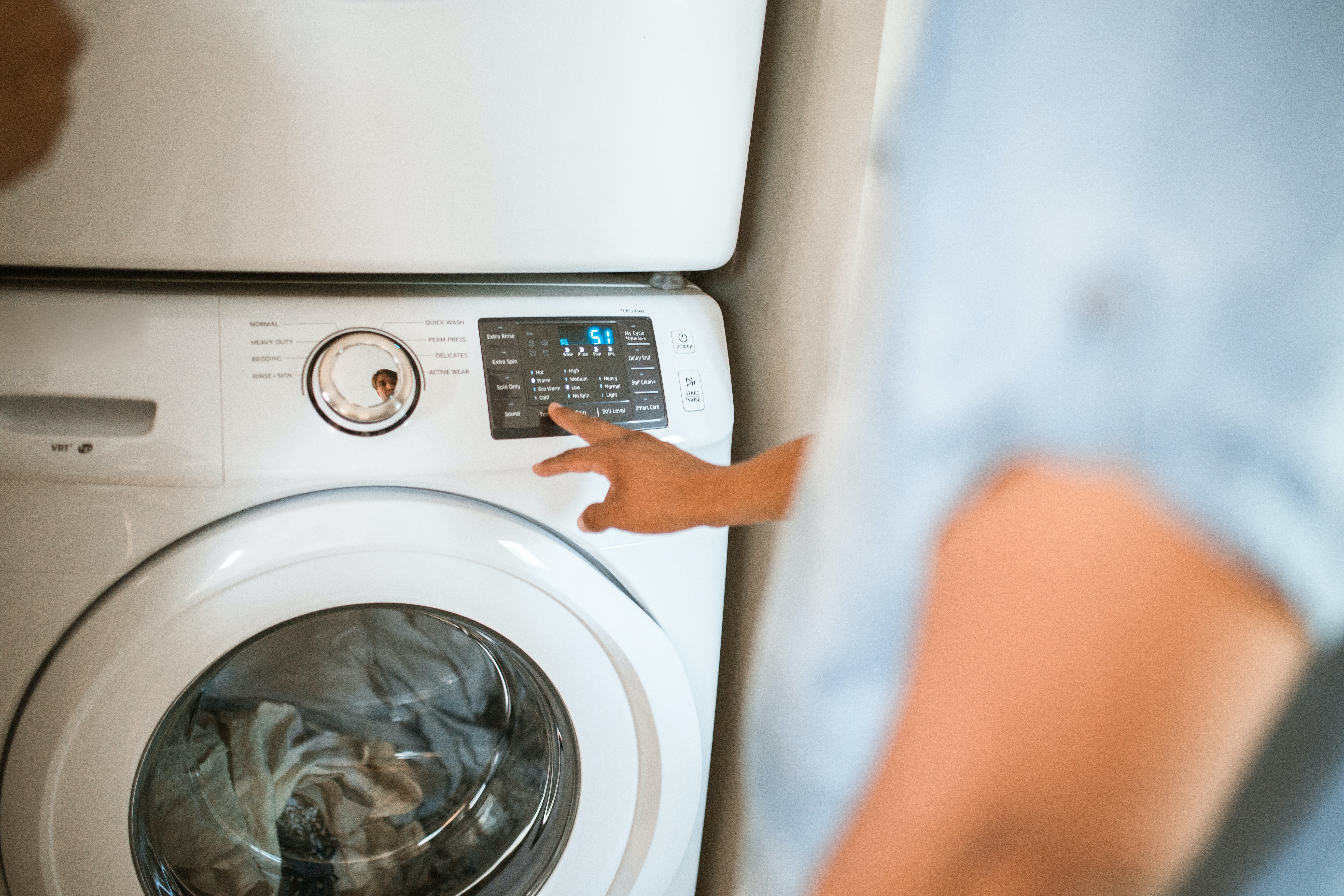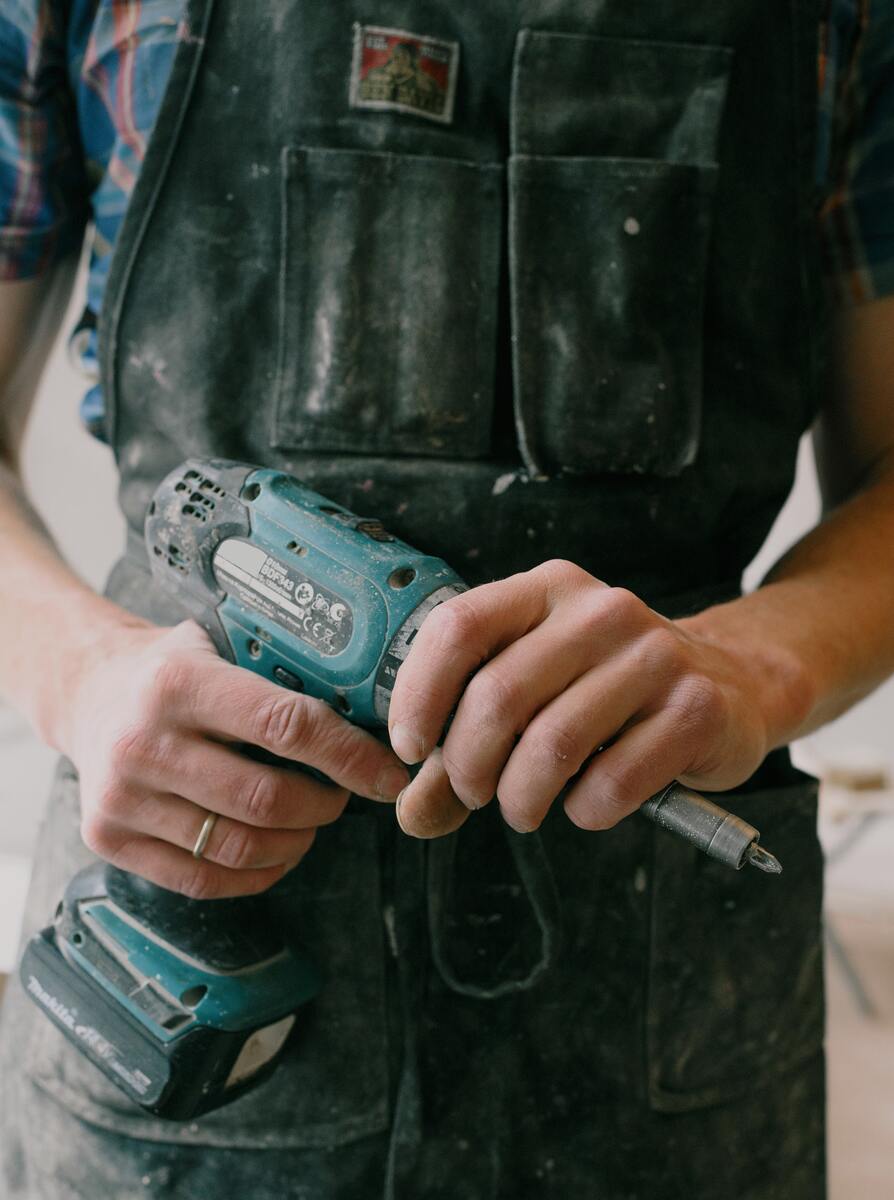You are viewing 1 of your 3 free articles for this month.
Get the knowledge: The benefits of better product design
Products we buy aren’t designed to last forever, but could things be different for the environment if they lasted longer?

We are surrounded by items designed to make our lives easier and more comfortable. From gadgets like smartphones and laptops, to appliances such as dishwashers, fridges and washing machines.
It makes sense, then, that they should last as long as possible. Firstly, these types of products are often costly, so we want to make sure we get our money’s worth out of them. Secondly, the materials and resources that go into manufacturing these items is a huge driver of climate change that is only compounded if they need to be replaced frequently.
According to the European Environmental Bureau, extending the lifetime of all washing machines, laptops, vacuum cleaners and smartphones in the EU, by just a single year, would save around four million tonnes of CO2 emissions annually by 2030. That’s the same as taking more than two million cars off the road.
And thirdly, when these items are replaced, their predecessors often end up in landfill. According to a UN report, global electrical waste (e-waste) is set to grow to almost 75 million tonnes by 2030. Estimates from WEEE Forum indicate we produced around 57.4 million tonnes in 2021 alone – greater than the weight of the Great Wall of China.
Data from Uswitch shows that as of 2023, Norway produces the most e-waste per person at 26kg per year. The UK comes in second with 23.9kg, followed closely by Sweden at 23.4kg.
Ensuring that products last as long as possible is one way to mitigate these challenges, and for the consumer, that means being able to fix or repair things when they go wrong. Indeed, as a survey by Eurobarometer shows 77% of EU citizens would rather repair their appliances than replace them.
Waste built-in
But businesses are not always receptive to this idea. Many products are designed with ‘planned obsolescence’ built in, so that the consumer is forced to buy new models or upgrades. Manufacturers are also reluctant to allow customers to repair their products for reasons such as misuse of intellectual property, or for safety reasons when hazardous materials are involved.
Technically speaking, everything is repairable, but the design and manufacture of products is often such that doing so is time-consuming and expensive. Consumers may also struggle to locate appropriate repair services near them, particularly as high levels of technical expertise are often required to carry out the job.
Indeed, the growing complexity of products means it’s often more cost-effective for a manufacturer to replace the whole appliance, or for the customer to simply buy a new one, rather than try to repair it.

Some companies have purposefully made it so that customers cannot have items repaired outside of their approved (and usually expensive) networks. iFixit, a popular online community for DIY product repairs, has found that some items are designed so that repair is all-but impossible. This has given rise to the ‘right to repair’ movement, which believes that end users, consumers, and businesses should be able to repair devices they own, without any legal or technical restrictions.
Right to repair rules around the world
A steep rise in the cost of living, coupled with a growing awareness of climate issues, means that right to repair has taken a prominent position in the consumer psyche in recent years, and governments have responded.
In the EU and UK, right to repair legislation came into force in 2021 that requires manufacturers of electrical goods such as fridges and televisions to make their products repairable for at least 10 years after first coming to market. Manufacturers or importers are also now obliged to make a range of essential parts such as motors, pumps, shock absorbers and springs available to professional repairers for up to 10 years after the last unit of a specific model has been placed on the EU market.
However, campaigners in both the EU and UK have criticised their respective pieces of legislation for not going far enough, as the spare parts and repairability criteria are only directed at professional repairers, not at the people who own products. There is no guarantee that spare parts and repairs will be affordable, so repair is not yet the easiest, default option. Additionally, gadgets such as laptops, tablets and smartphones are not yet covered by the rules in either region, although the European Commission is reconsidering this.
In Australia, the Productivity Commission publicly released its Right to Repair report in December 2021, which the government is yet to respond to. In India, the government has recently introduced its ‘Right To Repair’ plan, aimed at strengthening consumer rights and optimising the repair process for electronic gadgets and cars within the country.
In the US, meanwhile, President Joe Biden passed an executive order in 2021 directing the Federal Trade Commission (FTC) to issue rules requiring companies to allow DIY repairs. In July, the FTC unanimously adopted a policy statement supporting the right to repair that promises enhanced enforcement efforts which could open the way to new regulations. According the Repair Association, more than 25 US states are also considering their own right to repair legislation. However, Biden’s legislation doesn’t extend to cars – something that is set to become a key issue as new vehicles are manufactured with more electronic components and integrated software.
France leads the way
One notable outlier to the EU’s basic legislation – and a country which could blaze a trail for the rest of the world – is France. In 2019, the French government adopted a law regulating the mandatory display of clear information for consumers on the repairability of electrical and electronic equipment. Since January 2021, labelling has appeared on five categories – smartphones, laptops, televisions, washing machines and lawnmowers – giving a clear repairability score out of 10 based on criteria such as the availability and price of spare parts, and ease of disassembly.

Additionally, by 2024 France plans to replace its Repairability Index with a Durability Index, whereby manufacturers will disclose not only how repairable their goods are, but also describe the full lifecycle for each product.
France’s endeavour serves as a potential template for other countries and lends credibility to a number of proposed lifespan labelling projects currently undergoing trials (such as the Longtime Label – an independent label aimed at giving assurance that certified products are reliable, repairable and designed to last). And, crucially, it’s helping to push major electronics brands in the right direction, too.
While there is a clear appetite for fixable tech (consider the success of modular smartphone Fairphone, for example), tech companies have been slow to respond to this demand. Apple, for example, has traditionally been one of the worst offenders for enabling product repair, but to continue selling its products in France it too has had to display Repairability Index labelling on its products. And on launch of the scheme, these figures were predictably low. The MacBook Pro M1 scored just 5.6 out of 10, while the iPhone 11 and 11 Pro scored less, at 4.6.
Interestingly, not long afterwards Apple made the surprise decision to launch its own DIY repair centre, offering more than 200 individual parts and tools, allowing customers and third-party fixit companies access to genuine Apple components for the first time. At this juncture the service is only available in the US, but the company says it has plans to expand globally. Samsung has also launched a self-repair portal, designed to give customers more control over their tech.
Repair, reuse, recycle
Being able to repair our products in a way that is cost-effective and convenient will play a major role in driving down global e-waste and mitigating associated greenhouse gas emissions. Plus, it represents a positive move for local economies. Many repair stores are small-scale and local, and producers will need to engage their local repair economy and spare parts economy as part of their broader product ecosystem, which could also boost local jobs. Governments are therefore on the right track in giving the right to repair legislation serious consideration, but moving faster and more boldly will yield the biggest benefits.
Of course, even with repairability built into a product, it won’t last forever, which is why manufacturers must consider how their products – and the way they can be repaired – fit into a wider model of circularity, including how materials can be recycled or eventually disposed of. Learn more about recycling here, and how to make better choices when it comes to electronics.
This article was first published 11/08/22 but has been updated to reflect the latest research and developments in this area.
Check it out
For more information on these issues:
- The European Environmental Bureau is a founding member of the EU right to repair campaign and publishes Cool products don't cost the earth.
- WEEE Forum estimates for electronics waste.
- Uswitch data on e-waste per person by country.
- The Australian government's Right to Repair report.
- India's Right to Repair portal.
- European Parliament right to repair webpage including reference to Eurobarometer survey on consumer desire for repairability.
- The Global E-waste Monitor 2020 is a collaborative product of the Global E-waste Statistics Partnership (GESP).
- iFixit, a popular online community for DIY product repairs.
- European Parliament briefing on the EU's approach to right to repair.
- UK's right to repair legislation.
- The US has passed an executive order directing the Federal Trade Commission to issue rules requiring companies to allow DIY repairs.
The Repair Association list of US states considering their own right to repair legislation.
- France adopted a law regulating the mandatory display of clear information for consumers on the repairability of electrical and electronic equipment.
- The Longtime label is an independent label aimed at giving assurance that certified products are reliable, repairable and designed to last.
- Apple's repairability index information reported for products sold in France.
- Apple's DIY repair centre.
- Samsung's self-repair centre.
Activate employees
Find out how OckiPro membership engages employees to deliver sustainability impact.
Get Involved
There are many ways to get involved with Ocki and its community. To find out more, click the button below




